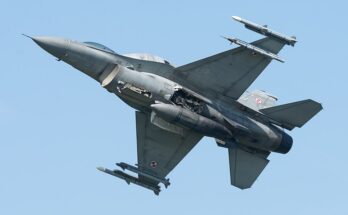By Thomas Dolzall, Forecast International
The next-generation F-CEV Terrier entered serial production in late 2012. BAE Systems delivered the first Terrier vehicle to the British Army in June 2013, with the order scheduled for completion by August 2014.
With the conclusion of British Army production in 2014, the future of the F-CEV Terrier production line will be almost wholly dependent on the export market through 2023 and is likely to face prolonged periods of dormancy.
The Army’s F-CEV Terrier vehicles are being assembled primarily at BAE Systems’ Newcastle-upon-Tyne manufacturing facility. BAE Systems announced in 2012 that the Newcastle-upon-Tyne facility would be shuttered upon the completion of the British Army’s 60-vehicle F-CEV Terrier order. However, the contractor intends to relocate and reassemble the Terrier’s production line machinery and technical systems at its Telford facility in anticipation of future orders.
Although the F-CEV Terrier features significantly enhanced capabilities in comparison to its predecessor, these improvements also result in a correspondingly steep unit price for the vehicle.
With defense spending in Western Europe and North America constrained by the lingering impact of 2008’s financial crisis and the deployment of the remaining international forces in Afghanistan drawing to an end, the most promising export prospects for the F-CEV Terrier may reside in the Middle East and Asia. However, the ongoing political crisis in Ukraine has spurred a level of renewed interest in the procurement of heavy military vehicles among European states, and France has expressed modest interest in evaluating the F-CEV Terrier for potential procurement. BAE Systems and the British Army performed demonstrations of the Terrier for French defense officials in June 2014.
The potential for French acquisition of the Terrier system may in part be predicated on the corresponding purchase of French defense products by the U.K., most notably the Nexter VBCI armored personnel carrier or CAESAR self-propelled artillery system.
In order to spur export interest in the vehicle, BAE Systems showcased the Terrier outside the U.K. for the first time in June 2014, at the Eurosatory Land and Airland Defence and Security Exhibition.
The vehicle’s high cost – about $8 million per unit – will likely persist in acting as a prohibitive factor on the Terrier’s overall sales potential. Given the current economic climate, few states are willing, or able, to incur such a significant expense in order to procure a dedicated engineering vehicle.
For 50 years, Forecast International intelligence reports have been the aerospace and defense industry standard for accurate research, analysis, and projections. Our experienced analysts compile, evaluate, and present accurate data for decision makers. FI's market research reports offer concise analysis of individual programs and identify market opportunities. Each report includes a program overview, detailed statistics, recent developments and a competitive analysis, culminating in production forecasts spanning 10 or 15 years. Let our market intelligence reports be a key part of reducing uncertainties and mastering your specific market and its growth potential. Find out more at www.forecastinternational.com



